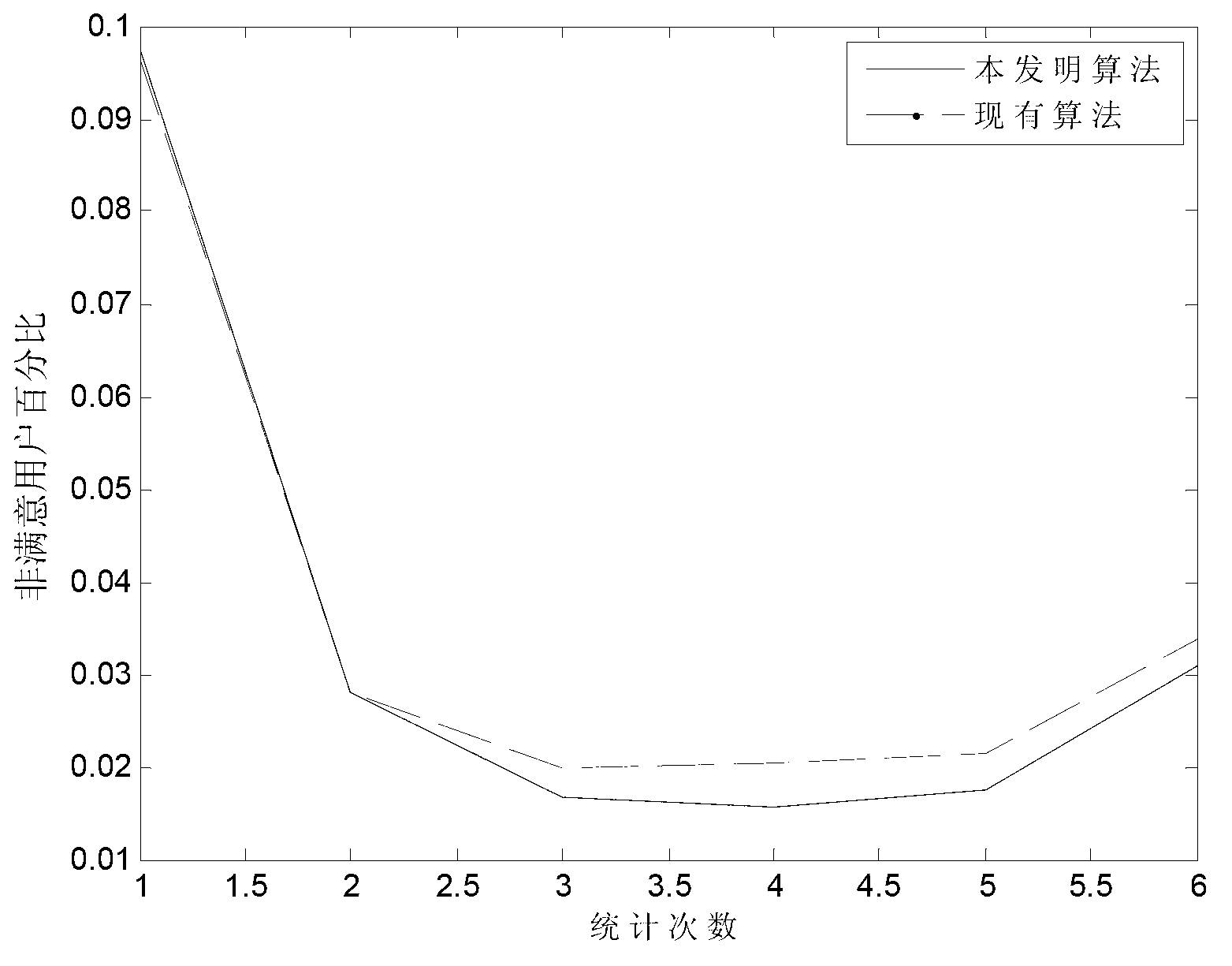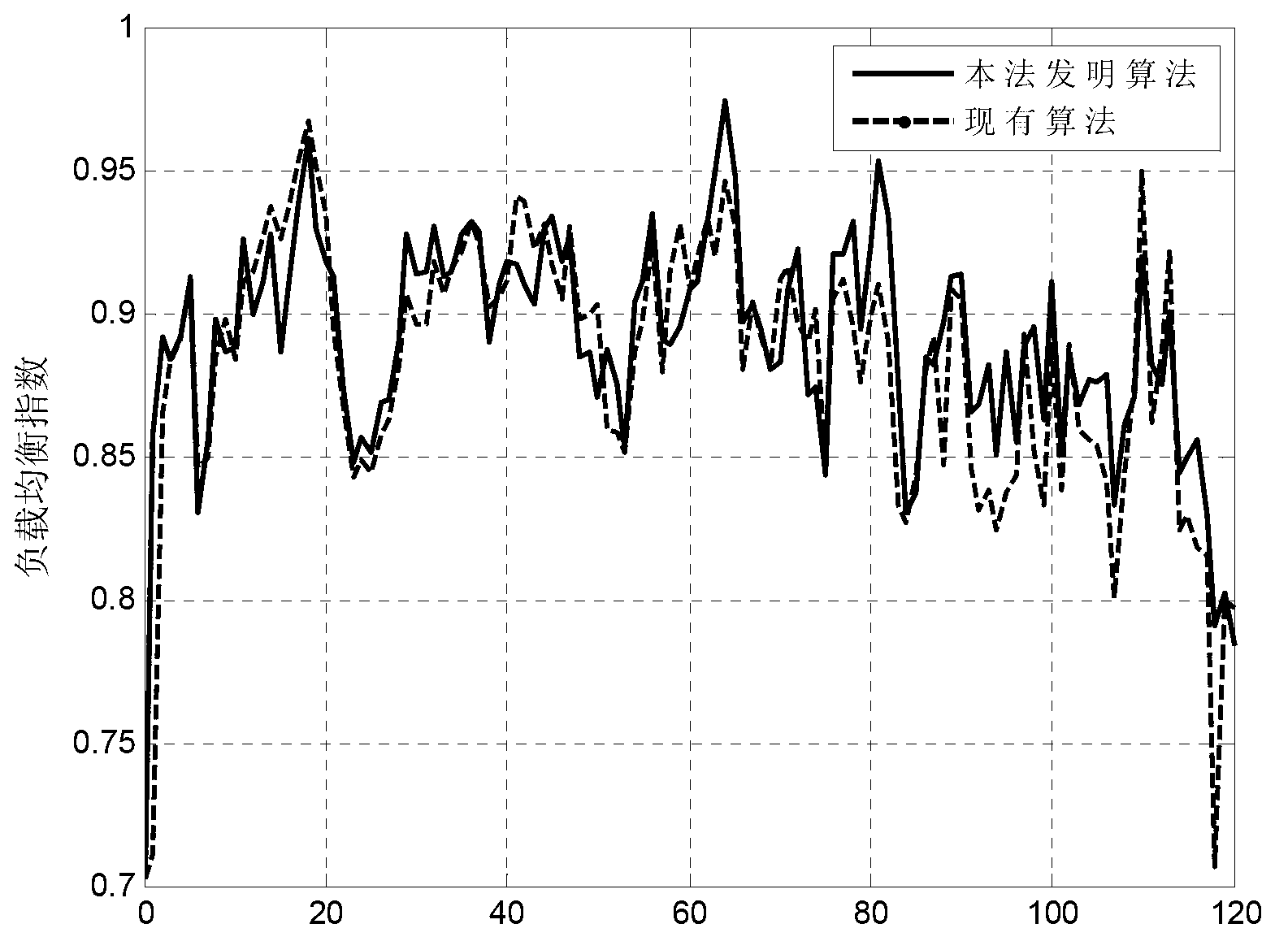Moving-load balancing method based on efficacy function in LTE (long term evolution) self-organized network
A mobile load balancing and self-organizing network technology, applied in network planning, electrical components, wireless communication, etc., can solve the problem of not being able to directly identify the load status of the user's neighborhood
- Summary
- Abstract
- Description
- Claims
- Application Information
AI Technical Summary
Problems solved by technology
Method used
Image
Examples
Embodiment Construction
[0037] The present invention will be further described below in conjunction with drawings and embodiments.
[0038]Taking 3GPP LTE downlink multi-cell network load balancing as an example, considering a cellular network system, each cell is controlled by an evolved base station eNB located at its center, and the cells are no longer divided into sectors. Therefore, the concepts of cell and base station can be interchanged here. The reuse factor of the cell is 1, and the 12 adjacent subcarriers are regarded as a whole as a basic unit of resource allocation, which is called a physical resource block (Physical Resource Block, PRB). K represents a user set, and I represents a cell set. I i,k is the connection function, which satisfies:
[0039]
[0040] Each user can only be connected to one cell at most, so the connection function needs to satisfy the equation:
[0041] Σ i ∈ I ...
PUM
 Login to View More
Login to View More Abstract
Description
Claims
Application Information
 Login to View More
Login to View More - R&D
- Intellectual Property
- Life Sciences
- Materials
- Tech Scout
- Unparalleled Data Quality
- Higher Quality Content
- 60% Fewer Hallucinations
Browse by: Latest US Patents, China's latest patents, Technical Efficacy Thesaurus, Application Domain, Technology Topic, Popular Technical Reports.
© 2025 PatSnap. All rights reserved.Legal|Privacy policy|Modern Slavery Act Transparency Statement|Sitemap|About US| Contact US: help@patsnap.com



